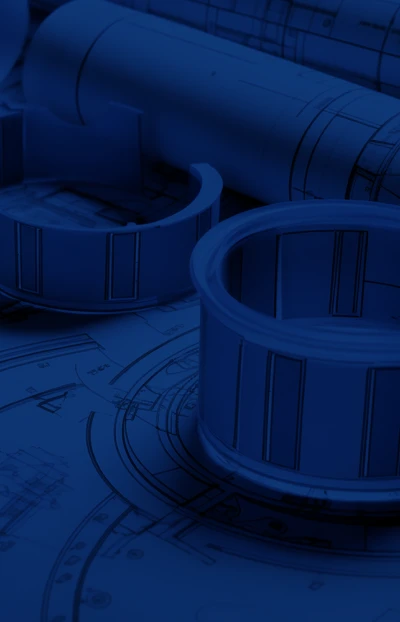Riverside County Property Taxes

Riverside County is one of the most desirable places to live in the United States. Home to sunny Palm Springs, it’s also one of the fastest-growing regions in the greater Los Angeles urban area because of its comparatively affordable housing. If you are investing in Riverside County real estate, there are some important facts that property owners should know about taxes in the area.
6 Things to Know About the Riverside County Property Taxes
- How Riverside County Property Taxes Are Calculated
- Tax Rates for Riverside County
- The Mello-Roos Act and Community Facilities Districts
- How and When to Pay Your Property Taxes
- The Supplemental Tax Bill
- How to Lower Your Tax Liability
According to information provided by the Riverside County Assessor and Tax Collector, property taxes are determined by first determining the value of your property. Generally, the assessed value of your property will be equivalent to its market value when you purchased it, though this value can be different than the purchase price.
1. How Riverside County Property Taxes Are Calculated
Your home’s value—at least according to the Riverside County Assessor’s Office—can increase by as much as 2% every year…which may actually work out better for you than going by the current market value in California’s hot market. If you sell your property or improve upon it, the home will need to be reassessed. While the exact formula used by the Assessor is not publicly listed, you can call their office directly to discuss it over the phone at 951-955-6200.
Once the Assessor has determined the value of your real property, the Auditor-Controller will apply the following taxes:
- General tax levy
- Locally-voted special taxes
- City and/or district direct assessments
Thankfully, the general tax levy is capped at $1 for every $100 of assessed property value. For example, if you own a single-family home in the area (median home prices for Riverside County are currently listed at $400,000 on Zillow), your general tax levy would be $4,000—and that’s before locally-voted toppings are added to your tax sundae.
2. Tax Rates for Riverside County
The exact tax rates for your property within Riverside County will vary because of factors like school districts, infrastructure, parks and open space, and voter-approved special projects. You can find the exact tax rate for your district online, but the Riverside County Tax Assessor has not posted the information in one convenient, downloadable pamphlet. If you want a copy of the tax book, you actually need to pay $35 and send an official request to the following address:
Riverside County Auditor-Controller’s Office
P.O. Box 1326
Riverside, CA 92502
If you call them directly at 951-955-0329, they may be able to give you specific information over the phone.
As mentioned, special assessments will be added on to the general levy in order to fund things with tax revenues like garbage collection, weed abatements (lawn care), sewer charges, and “maintenance fees” for various components of the infrastructure. If you don’t understand what a particular special assessment is for, a contact number will be on your tax bill.

3. The Mello-Roos Act and Community Facilities Districts
It’s important to be aware of The Mello-Roos Act of 1982, which is special legislation that allows cities and counties to designate Community Facilities Districts (CFDs) and levy taxes for special projects. These taxes require a 2/3 majority of voter approval, which is a strong indicator that a particular service is needed—or at the very least, a popular idea. These special projects may not be funded by the general levy of property tax revenues, so extra revenue is created with these voter-approved bonds.
4. How and When to Pay Your Property Taxes
You can pay your Riverside County property tax bills online, in person, or by sending a check in the mail. Keep in mind that credit card payments are subject to a convenience fee, so an alternative payment method can save you money. Tax bills will be mailed by the county assessor’s office on or before November 1st. If you don’t get your tax bill within the first week of November, you might want to call the Assessor at 951-955-3900.
The first installment of your property tax payment is due between November 1 and December 10, while the second installment is due between February 1 and April 10. To stay on the safe side, be sure to mail your taxes in before the deadline to file—don’t wait until the last minute. You can choose to pay the whole amount due in the first installment, which may work to your overall benefit.
Riverside County wants you to know that failure to obtain a bill is your fault, not theirs. If you don’t pay your taxes on time, a 10% penalty is added. If you miss the second payment as well, an additional 10% is added, along with a $38.63 administrative fee. Additionally, you cannot pay the second installment until the first is paid in full.
5. The Supplemental Tax Bill
If your property recently transferred ownership or was reassessed after some improvement, you may be subject to a supplemental tax bill. These bills can be mailed throughout the year, so their delinquency date will vary.
If the supplemental tax bill was mailed between July 1 and October 31, you have to pay the first installment by December 10 and the second by April 10. If the supplemental tax bill was mailed between November 1 and June 30, the first installment is due the last day of the month following the month in which the bill was mailed. The second installment is due the last day of the 4th month after the first installment would have become delinquent. If you miss the deadline, a 10% penalty is added to your supplemental bill.
Sound confusing? It certainly is—and one of the reasons why it helps to hire a professional tax advisor who is familiar with local taxes and fees. Be aware that your mortgage company does not pay supplemental tax bills, even if you normally pay property taxes with an impound account. The good news is that you won’t be getting a supplemental bill every year unless you’re remodeling every year. In rare instances, your supplemental tax bill may come as a refund due to destruction of property, but these have to be caused by an “act of nature.”
6. How to Lower Your Tax Liability
With Riverside County taxes as high as they are, there are a few tricks of the trade you might be able to leverage.
Contest the Assessed Value of Your Home
You can file an appeal and contest the assessed value of your home with the Assessor’s office directly. The Riverside County Board of Supervisors has created an independent Assessment Appeals Board, which can help you start the appeals process. You must file the appeal between July 2 and November 30. Supplemental assessments after remodeling or new construction must be contested within 60 days of receiving a “Notice of Supplemental Assessment” from the Assessor.
Appeal applications can be started by calling 951-955-1060 or by writing to:
Assessment Appeals Board
P.O. Box 1147
Riverside, CA 92502-1147
See If You Qualify for an Assessment Exemption
There are potential tax exemptions for veterans, clergy, welfare recipients, and even homeowners, in some cases. If you aren’t sure if you qualify for an assessment exemption and tax discount, you can call the Exemption Division at 951-955-6200.
Pay Your Taxes in Full for Possible Savings
Another money-saving strategy for taxpayers involves paying your property tax in full with the first installment, and then itemizing that cost when calculating your Federal and State income taxes. Based on the hefty property taxes in Riverside County, this might yield a nice deduction.
If your property in Riverside County is a rental property, there might be other rental property tax deductions you could leverage as well as part of your overall asset management strategy.
Keep Your Home Among Friends and Family
Another way to keep taxes low involves a change in ownership. Interspousal transfer, inheritance, or transfer of the property between parents and children (in either direction), along with the addition of joint tenants, do necessitate a reappraisal of the property. While this may not benefit you, it certainly can benefit parents or children who are moving to the area, especially when the market is hot and home values are way beyond the 2 percent-per-year increase the state assigns.
Retire on the Sunny Side of Life
Who wouldn’t want to retire in Palm Springs? Homeowners over 55 years of age who sell their home (anywhere in California) and purchase a primary residence in Riverside County within 2 years can transfer the pre-sale value of their old home to their new home—as long as the new home is of equal or lesser value than their previous residence. This can be a great way to move to the neighborhood while minimizing your taxes during retirement.
As you can see, navigating the choppy waters of property taxes while trying to save money requires some serious strategy. While you may have considered hiring a property manager to look after your assets, a better option might be to work with a real estate asset manager, who can protect your rental property income.

How Does Riverside County Compare to Other Cities in California and the United States?
Any real estate agent will tell you that Riverside County is one of the most desirable parts of California, and the Assessor thinks so, too: in terms of property taxes, it’s one of the most expensive regions in the entire country. The average property tax bill was $4,572 in 2018, while the national average was almost $3,500—placing Riverside County 69th out of 141 of the largest metropolitan areas in the U.S.
Riverside County Property Taxes
Home values in California are high, and there’s not much to do to get around that. California is one of the most desirable places to live in the U.S., and southern California is one of its most popular regions. In recent years, Riverside has also seen an influx of residents from other parts of the Los Angeles metro area, which will continue to drive up home values and taxes.
Investors might find a multifamily unit to be more appealing than single-family homes. There are dozens of universities in the area in need of student and workforce housing. Parks and well-known theme attractions are not too far away, making hotels another viable real property option.
If this beautiful region of the Golden State is calling your name, you don’t need to shy away from obtaining a slice of the Riverside County pie. Consult with a professional tax advisor who understands all the nuances of Riverside County property taxes and can help you develop a tax strategy that minimizes your liability.
3 Steps to Create an Invisible Investor Strategy
The greatest mistake that people make when it comes to asset protection for real estate is not understanding the risks that are waiting out there for them. This eBook reveals the structure you should follow to ensure your hard earned money is protected from frivolous lawsuits and costly tax mistakes.



